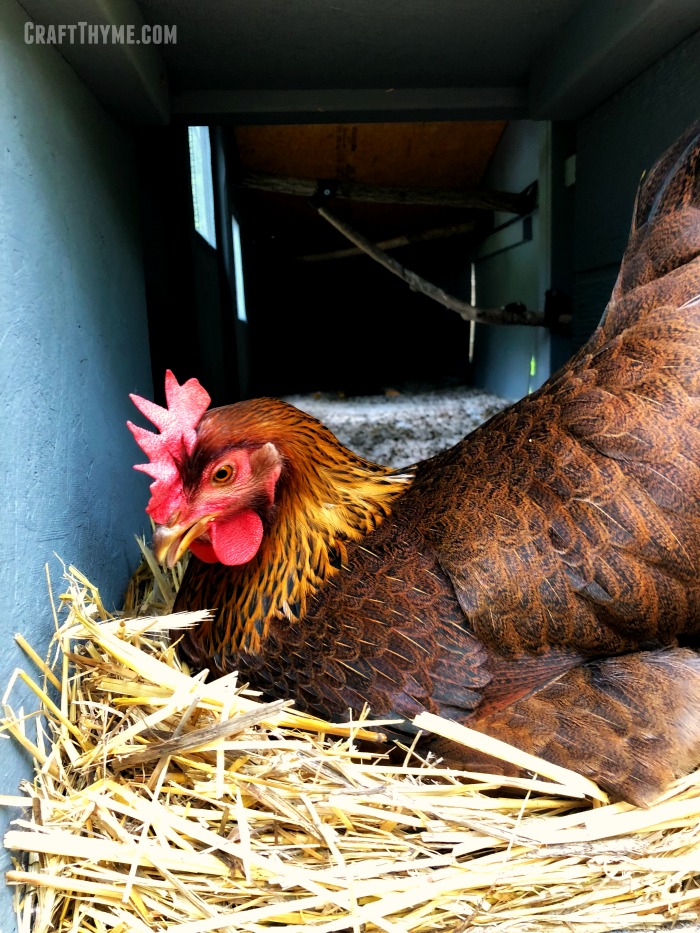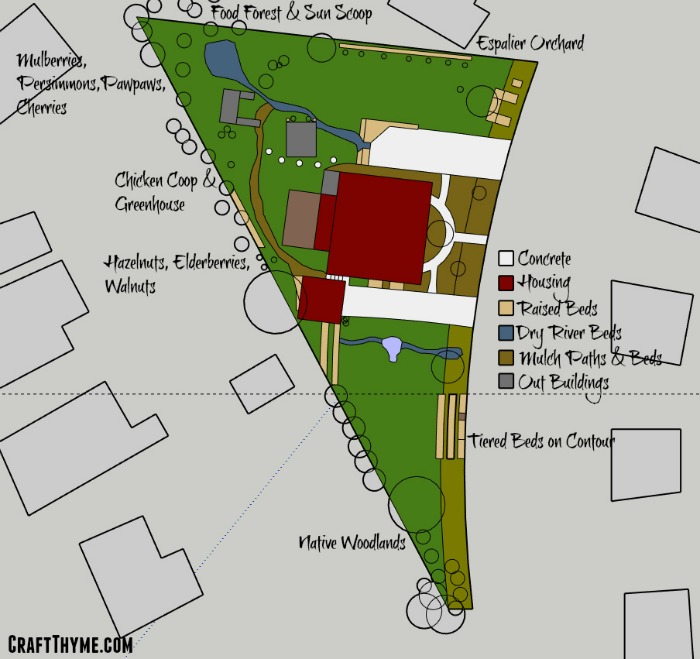
Every fancy gardening website extols the virtues of raised beds. I personally, resisted them for years but a combination of hugelkutlur and raised beds changed my mind! Before, we get into how to build a hugelkutlur raised bed, let’s discuss the why you should build a hugelkultur raised bed. Also, we can answer the all important question:
What the hell is Hugelkultur and how the hell do you say it?
The easiest definition of Hugelkultur (hoogle – cult – er) is it is a hilled bed where the center of the bed is large trunks of wood and debris covered in dirt. I added that stab at pronunciation because one time I asked readers how to pronounce diatomaceous… 80+ helpful comments later I decided to edit the article and never ask for help on that score again ;).
But back to hugelkultur; There are a lot of benefits to this traditional style of hugelkultur beds, such as cost, size, soil warmth, etc, but for me the aesthetics just weren’t what I was looking for.

Why Your Raised Beds should be a Hugelkultur Raised Bed
I have always been resistant to raised beds. My vegetable gardens growing up always were in-ground. I can recall the tilling and dirt clod smashing needed to prep a garden from very early years. As a side note, I can’t, to this day, explain why may parents insisted on having a garden growing up. It wasn’t their “thing” and we always spent summers angrily hoeing and yelling at groundhogs. At one point there was an incident where we electrocuted an opossum. Which, while an awesome display of electricity was not exactly the intended result. It did, however, keep the F’ing groundhogs at bay for some time. Till we finally realized the fried opossum had grounded the whole apparatus out. Which resulted in the loss of All. The. Corn.
Also groundhogs can suck it.
However, back to my garden, I was resistant to raised beds due to the added cost of whatever material you use to surround the bed, then the cost of dirt, the labor of construction, and the constant fight to keep the beds from drying out. I know lots of other gardeners who feel the same way. With all that against raised beds how can building a hugelkultur raised bed change everyone’s minds?
First, there are ways to prep raised beds for less. So much so, we wrote about it right here! Also, let’s be frank: Raised beds look good. As a permaculture enthusiast I shouldn’t give a twit about “looks” and focus on functionality but my artistic background just wants to make beautiful things. Raised beds are easy to edge, weed, fertilize, decorate, etc. But the watering. Oh the watering… Raised beds can be like a terracotta pot and need watering on a daily basis (twice daily?). Ain’t nobody got time for that.

Hugelkultur raised beds saved me from that fate of standing around with a hose and it can save you too! A lining of spongy wood and chips soaks up the water, then, releases it back to the dirt and plants slowly. Added bonus of a hugelkultur raised bed is the fungal cultures they bring. I attended a soil scientist’s (what a cool job title) class this spring at Organic Growers School and learned so much about how microorganisms and fungus assist the health of your plants. BUT that is a topic that needs its own series of posts. What was most important is that, outside of seedlings and a month of drought I haven’t watered my raised beds. During the drought I didn’t water the established perennials in these beds AT. ALL. I feel like an infomercial but damn… It is kind of amazing.
Have I sold you on having a hugelkultur raised bed? I bet we have! Now what? You got to build those puppies!
How to Build a Hugelkultur Raised Bed
We have detailed articles on building regular raised beds and fancy ones (Linked for your convenience). We even talk about how to fill and prep those raised beds for less. But if you are lazy, like me, here is a quickly tutorial on how to make a hugelkultur raised bed.
Step 1: Build some Raised Beds
Not some of those ridiculous 2 inch raised beds either… We are going to need some deep old boxes to make a good hugelkultur raised bed. I suggest building them at least 6 inches deep and actually follow my own advice. Though it doesn’t always look like it. On the below hugelkultur raised beds we had this brilliant idea to level them in the landscape and then spent an entire day digging only to end up with one of the sides being buried about a foot into the ground. However, they are damn level.

Step 2: Wood is Good
Depending on how deep your bed is, you are going to fill the bottom 1/3 to 1/2 with wood matter. Deeper beds can take more wood matter and still have room for lots of dirt. In our deeper beds we used old logs we found in a wood pile, then branches (some of them fresh), then tiny sticks the kids picked up in the yard.
Step 3: Chips Aren’t Just for Snacking
Even if you have a low raised bed you can follow this step. Our top layer was simple ground wood chips. These break down fast but hold water well. I even use wood chips in the bottoms of large containers so I do not have to water the containers as often.
That’s really it, just add dirt on top. But I make it seem a lot more complex and fancy in this in-depth tutorial about prepping beds for less.
It all sounds so great, amiright? But I bet you are wondering how these hugelkultur raised beds held up in the long run. Well, I’d be happy to say they have held up fabulously! The pictured beds above are two years old and going strong.
I plan to pressure wash the wood in the fall and stain, to help protect them, but as for fertility, water retention, and general upkeep?! I can not complain. Honestly, they still look good and grow like crazy. I’ve been neglectful in keeping up with the harvest (and weeds) due to the rate of growth, even in the heat of summer.
But if that isn’t enough for you then let’s take a second to check out these tomatoes… Certainly, these are a variety of heirloom Roma’s which are resistant to cracking, but LOOK, like really LOOK, no cracking! Through days of no water and days of deluge every evening I have managed to get tomatoes that aren’t cracked. I have never, in ground, or regular raised beds, managed to make that happen without a lot of TLC.

Tomatoes crack when water isn’t regulated. Guess what regulates the hell out of some water?! A Hugelkultur Raised Bed, That’s what! Anything that keeps me from having to babysit my plants will earn a place in my gardening secrets list.
So if you want to reap the benefits of good soil culture and water retention all while maintaining aesthetics then I think a hugelkutlur raised bed should be in your near future. If you try this techniques please let me know in the comments how well it works for you!
































